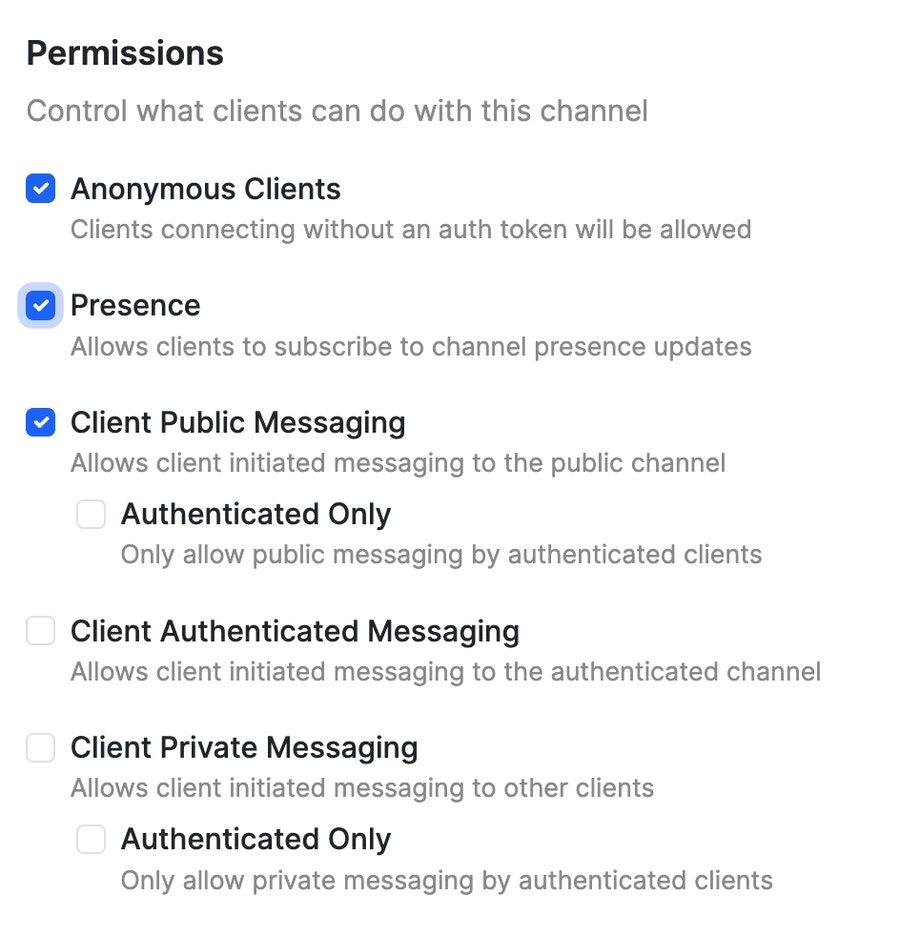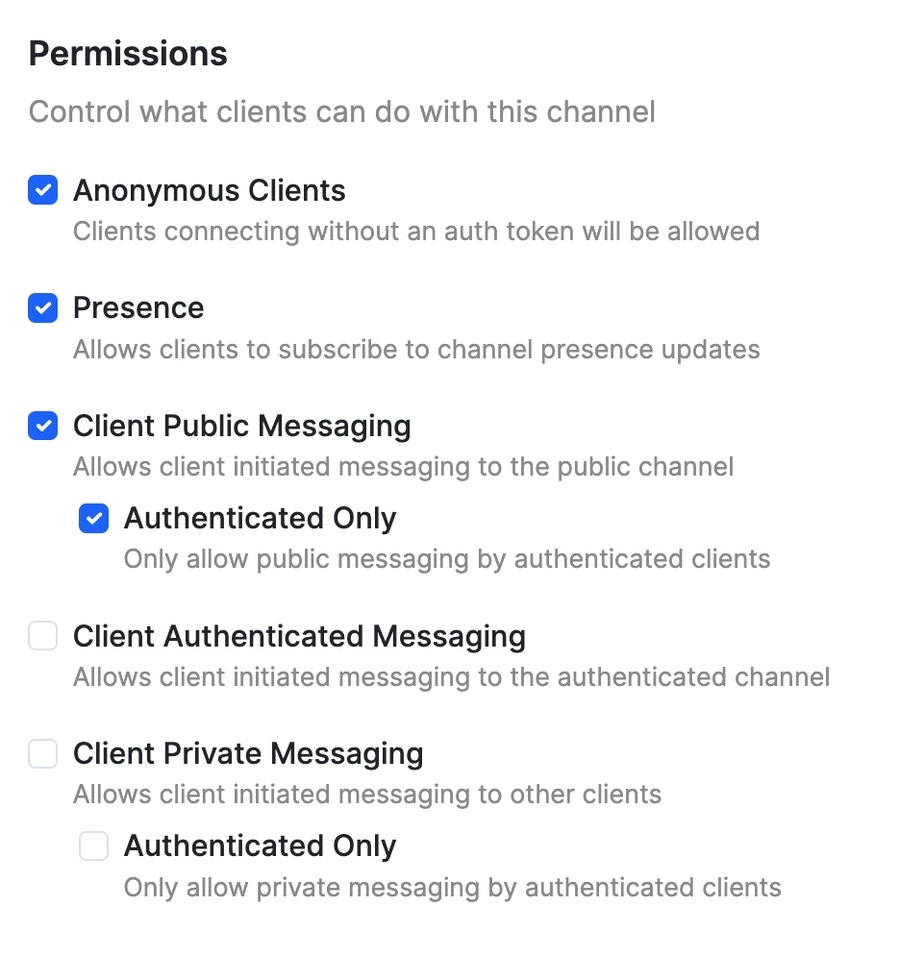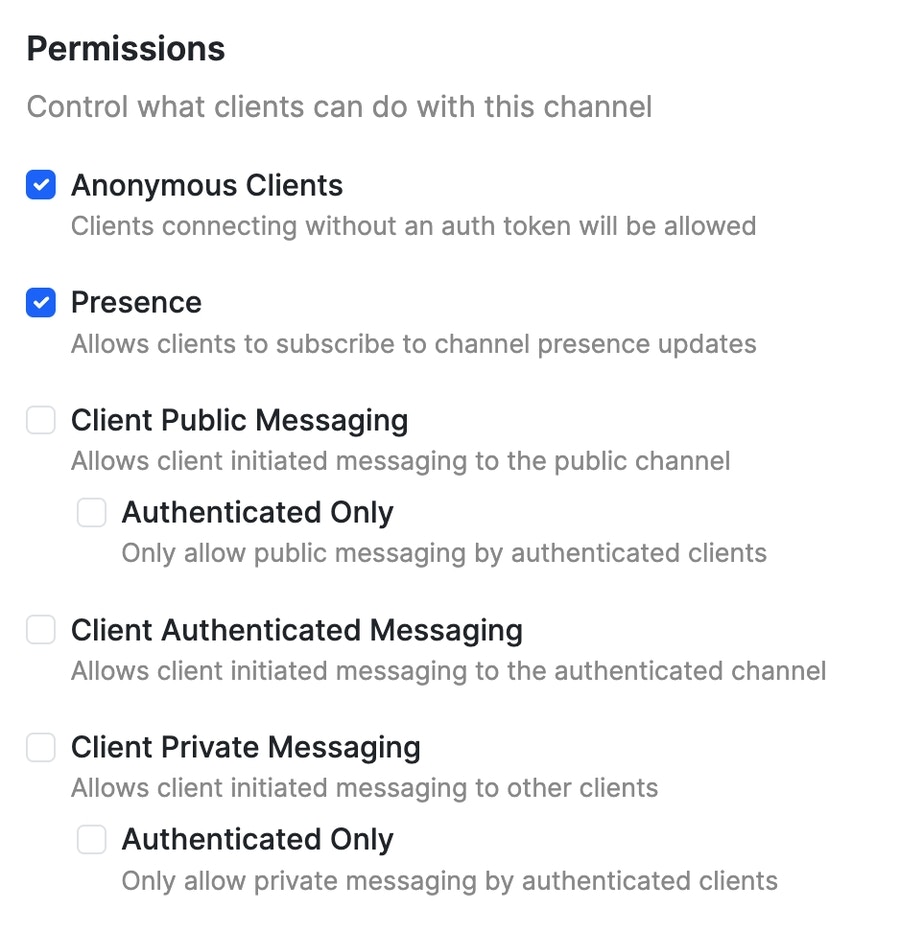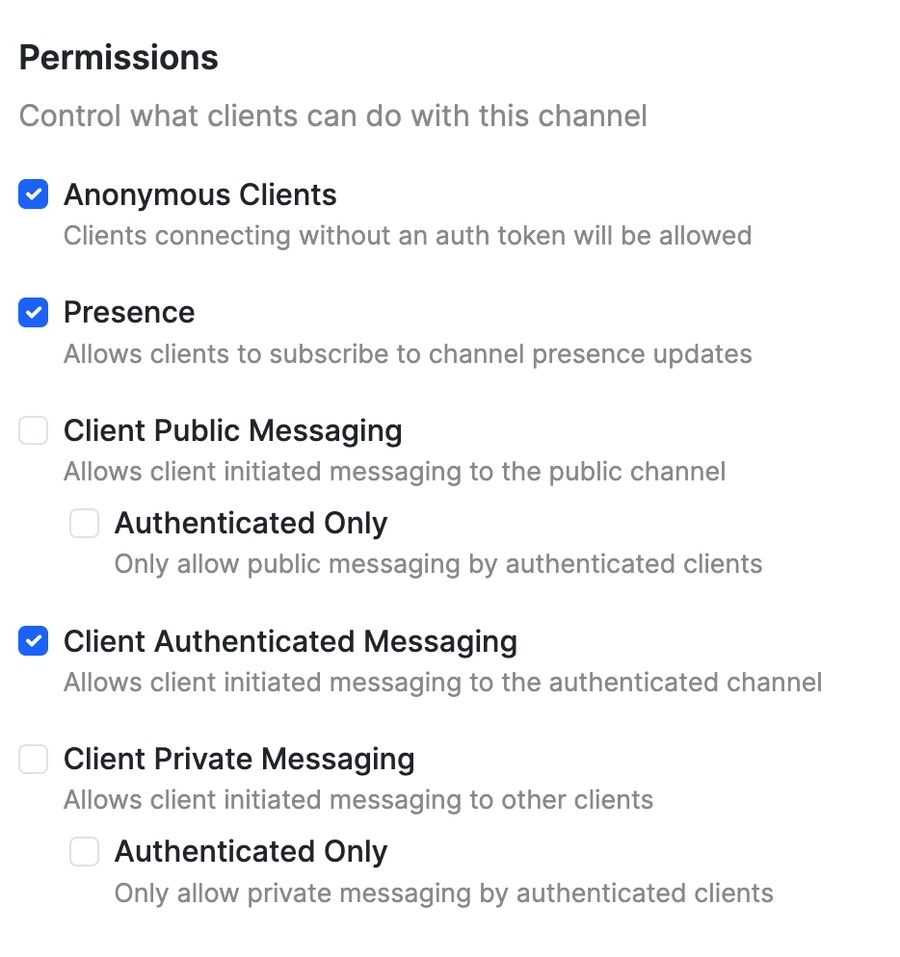- Setting the proper channel permissions for your use case
- Using nested channels to separate data
- Using Realtime Triggers to act as a primary or secondary measure to block messages from being sent to the channel
- Generating separate authentication tokens for connecting to the realtime server
- Obfuscating the implementation on your front-end, and ensuring that channel creation is handled properly
Permissions
Anonymous Clients
Anonymous Clients means that you allow unauthenticated users to connect to your channels, but they can not send messages.Presence
Every client connected to this channel will receive a the list of all the other clients (including yourself). Note that authenticated client details will be augmented with the extra information stored in their JWT token.Client Public Messaging
This option allows authenticated and unauthenticated clients to send messages to the channel. These messages will be sent to all the users connected to the channel.Similar to Client Public Messaging, this permission allows only authenticated users to send messages to the channel. Unauthenticated clients can still see the messages being sent to the channel.
Client Authenticated Messaging
Every message sent to the channel by authenticated clients will only broadcasted to all other authenticated clients. This means that anyone can connect to that channel, but only authenticated client will receive messages broadcasted by the channel. Anonymous client will not receive any messages.Client Private Messaging
This enables clients to send messages directly to other clients without requiring authentication as long as both clients are present in the channel.This permission enables client private messaging only between authenticated clients. Unauthenticated clients can not send private messages.
Applying Permissions
From the Realtime Settings panel, click the icon shown below to define channel permissions.
Channel Status
Defines whether or not these channel permissions are utilizedChannel Target
This is essentially the name of the channel you are creating permissions for. Channel names can be dynamic to support creation of new channels from your front-end by enabling the nested channels option. Using nested channels along with a name like “chatroom/*” will allow you to create channels that begin with “chatroom/” and anything else afterwards, such as a unique channel identifier. If you do not enable nested channels, the permissions will just apply to the channel name you specify.Description
Give your permission layout a description for organizational purposes, if you wish.Permissions
Using the list of permissions on this page, determine the correct set of permissions to apply to any channels that match the name pattern. Channel Triggers Triggers are function stacks that can run when messages or events are sent to the channel(s) impacted by these permissions. You need to first save your changes to enable adding triggers when creating new permissions. For more information about Realtime Triggers, see this section of our documentation.Permission Examples
Please note that Presence is usually optional no matter the scenario and is just based on if you want to utilize presence updates in your realtime channels.
| Context | Permissions |
|---|---|
| A chat application where users can both connect and send messages anonymously |  |
| A chat application where users can connect anonymously, but authentication is required to send messages |  |
| A notification system that allows for unauthenticated users to connect so they can receive notifications, but sending messages is not allowed. You would send notifications to this type of channel through the Realtime Event function. |  |
| A chat application that only allows authenticated users to connect and send messages |  |
| A chat application that only allows authenticated users to connect, and allows direct client-client private messaging for authenticated users |  |